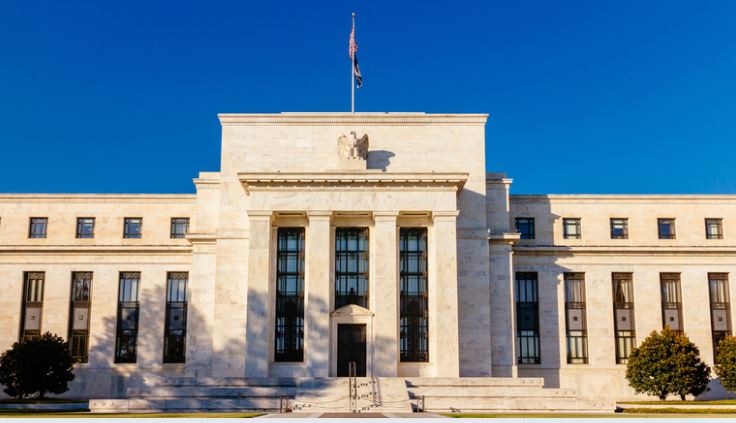The Federal Reserve’s decisions on interest rates have far-reaching implications, influencing not only the US economy but also global markets, including India’s financial sector.
What do the latest Fed rate cuts mean, and how do they impact economies worldwide? Let’s explore the effects and key takeaways for investors and businesses.
These rate cuts can reshape global trade dynamics, affecting borrowing costs, investment patterns, and market sentiments.
Understanding these shifts is crucial for businesses, policymakers, and individuals aiming to navigate the evolving economic landscape.
What Are Fed Rate Cuts?

The Federal Reserve, often referred to as the Fed, uses interest rate adjustments as a primary tool for managing the US economy. A rate cut typically reduces the cost of borrowing, aiming to stimulate spending and investment during periods of economic slowdown.
Key reasons for Fed rate cuts:
- To counteract inflationary pressures.
- To promote job growth and stabilize the economy.
- To manage the effects of global economic challenges.
For emerging markets like India, these decisions can lead to shifts in foreign investments and currency valuations, affecting the economic outlook.
How Have Recent Fed Rate Cuts Impacted Global Markets?
The latest Fed rate cut, announced during the December 2024 FOMC meeting, has sent ripples across global markets.
Wall Street’s Reaction
- The Dow Jones Industrial Average saw a dip, reflecting investor caution.
- NASDAQ and S&P 500 showed mixed trends, indicating uncertainties about the long-term effects.
Asian Markets’ Response
- Japan’s Nikkei index declined, mirroring apprehension about the global economic slowdown.
- Chinese markets showed resilience but remained cautious, especially in export-focused industries.
Bond Yields and Currencies
- US Treasury yields dropped, signalling a rush towards safe-haven assets.
- The dollar weakened, providing temporary relief to emerging market currencies like the Indian Rupee.
What Do Fed Rate Cuts Mean for India’s Economy and Stock Markets?

The Indian economy, closely tied to global markets, reacts significantly to changes in the Fed’s monetary policies.
Sensex and Nifty Movements
Following the latest announcement, the Sensex dropped over 1,000 points, reflecting investor anxiety. The Nifty also experienced volatility, with sectors like IT and banking seeing major fluctuations.
Impact on the Indian Rupee
The Fed’s decision led to a slight recovery in the Rupee, as a weaker dollar increased the attractiveness of Indian exports. However, sustained volatility remains a concern.
Sectoral Impacts
- Technology: IT firms may benefit from a stronger US economy post-rate cuts.
- Banking: Reduced global liquidity could pose challenges for credit availability.
- Exports: A weaker dollar might improve competitiveness for Indian exporters.
Will the Federal Reserve Continue Cutting Rates?
Jerome Powell, the Fed Chair, emphasized a cautious approach during the December 2024 meeting. While the rate cut aims to stabilize growth, inflation remains a significant concern.
Economic Projections
- Inflation is expected to hover near 3.5%, higher than the target of 2%.
- GDP growth forecasts for 2024 suggest modest improvement but remain under pressure.
Balancing Act
The Fed faces a dual challenge: stimulating the economy without fueling inflation. Future rate cuts will depend on evolving economic conditions, particularly unemployment and consumer spending trends.
What Should Investors Know About Fed Rate Cuts?

For Indian investors, understanding the Fed’s policy moves is crucial for navigating market volatility.
Key Insights
- Equity Markets: Stock markets may experience short-term volatility but could stabilize as global conditions improve.
- Fixed Income: A weaker dollar could impact foreign portfolio investments in Indian bonds.
- Savings: Interest rate changes may influence returns on fixed deposits and other savings instruments.
Strategies for Investors
- Diversify portfolios to mitigate risks from global market fluctuations.
- Monitor sectors like IT, pharmaceuticals, and export-driven industries, which are likely to benefit.
- Stay updated on central bank policies in India, as they may offset some effects of the Fed’s decisions.
Conclusion
The Fed’s latest rate cut underscores the complexity of managing global economic challenges. While its immediate effects on the US and global markets are evident, its ripple effects on India highlight the interconnectedness of today’s economies.
For investors and policymakers alike, staying informed and agile is key to navigating these changes.
Moreover, the decisions taken now will shape long-term economic trends, influencing growth trajectories and investment strategies.
As global markets adapt, collaboration between nations and institutions becomes increasingly critical to ensure stability and progress.
FAQs
Why does the Federal Reserve cut interest rates?
The Federal Reserve cuts interest rates to stimulate economic growth, counter inflation, and encourage borrowing and investment.
How do Fed rate cuts affect the Indian Rupee?
A Fed rate cut often weakens the US Dollar, which can temporarily strengthen the Indian Rupee and improve export competitiveness.
What sectors in India are most affected by Fed rate cuts?
Sectors like IT, pharmaceuticals, and banking are significantly impacted due to their reliance on global markets and liquidity conditions.
Will the Fed continue cutting rates in 2024?
Future rate cuts will depend on economic indicators like inflation, unemployment, and consumer spending in the US.
How do Fed rate cuts influence stock markets?
Rate cuts can create volatility in stock markets, with investors weighing the implications for growth and inflation.
Are Fed rate cuts good for emerging markets like India?
It depends. While they may attract foreign investment due to a weaker dollar, reduced global liquidity could pose challenges.
What should Indian investors focus on after a Fed rate cut?
Investors should diversify their portfolios, monitor global trends, and stay updated on domestic monetary policies.




